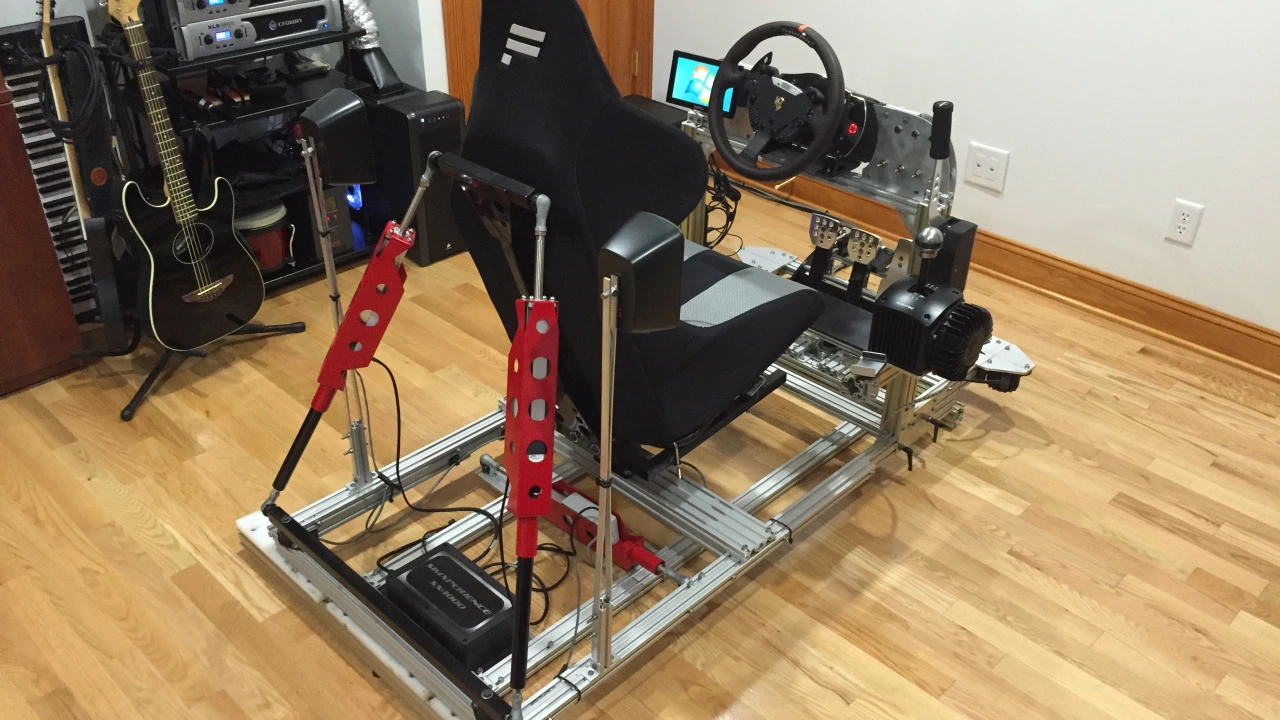Introduction: Welcome to the Racing World!
Hey race enthusiasts, it's Derek here! Today, I'm going to walk you through a thrilling journey. Ever fancied being the next Lewis Hamilton without actually risking your neck on a real track? Well, welcome to the world of racing simulators. Why watch the race on the screen when you could be a part of it, right? Here, we will guide you step by step on how to build your own racing simulator, right from purchasing the requisite components to setting up the whole thing. Buckle up for an exciting ride!
Do You Really Need a Racing Simulator?
Before diving into the complexities of the build, let's answer a simple question. Do you even need a racing simulator? Well, if you are a racing enthusiast like me, then the answer is a hearty yes. These aren't just for gaming aficionados. Racing simulators provide a great experiential learning platform for those who aspire to become a race car driver. With advancements in technology, they provide a highly realistic racing experience without any physical danger. Furthermore, if you're looking to refine your racing skills or keep up with new advancements in racing techniques, this should be right up your alley!
Purchasing the Components
Building a racing simulator requires some key components: A steering wheel, pedals, a gear shifter, a racing seat, a computer powerful enough to run the simulation software, monitors or VR headset, and a racing simulator cockpit. Now, these components do require some financial investment. But, trust me; it's worth every penny. I remember my first time assembling them together, there was a sense of pride and thrill that I don’t think I can capture in words. However, there's no need to break the bank. You can always start with a basic setup and then upgrade the components as per your needs and funds. Finding a balance between the budget and your racing fantasy is key here, folks!
Assembly: Putting it All Together
Here comes the techy part. Once you have all the components, it's time to put them all together like a jigsaw puzzle. I am not going to lie, it can be a bit complex, but hey, who doesn't love a good challenge? Starting from attaching the steering wheel, pedals, and gear shift onto the simulator cockpit, setting up your seat and monitors or VR headset, to connecting all these components with your system, each step needs to be carried out meticulously. The most exciting part of my first assembly? The very first ‘beep’ of my system after the initial setup. Oh the joy!
Choosing the Right Racing Simulation Software
This is the heart of your simulator! You could have the most sophisticated hardware, but without a good racing simulator software, it would be like having a sports car but not knowing how to drive. Depending on whether you are an amateur or a professional racer, there are various choices available like iRacing, Assetto Corsa, Project CARS, and more. Make sure to factor in the cost, graphics, and physics of each software before picking the one. Here's a tip, look out for online communities and forums, they can provide a wealth of knowledge when starting out.
Configuration and Fine-Tuning
Now that the hardware setup and the software installation is complete, it's time to configure and fine-tune your racing simulator. This normally involves setting your preferred resolution, calibrating the steering wheel, pedals, and the gear shift to your preference, and adjusting the graphics in the simulation software. It's like custom-tailoring your suit, you need to make sure that everything fits you perfectly. I still remember my first test drive after the initial setup, it was sensational! The sound of the engine revving, the virtual crowd cheering – it felt like my living room had morphed into Silverstone!
Troubleshooting Common Issues
Building a racing simulator can be a bit daunting especially if you hit a snag. But don't let this deter you. It's all part of the process! There could be some potential issues you might run into during the building process like software compatibility problems, hardware malfunctions, fine-tuning errors and others. From my personal experience, you can mostly sort out these issues with a little bit of online research and reaching out to the fellow community members. Be patient and persistent, it will be highly rewarding at the end.
And You're Ready to Race!
Voila! Your racing simulator is now ready for some action. Strap into your racing seat, put your hands on that steering wheel, press the pedal to the metal – and get ready to roll! Remember, the journey doesn't end after you have built your simulator. Like a real race car, it requires constant maintenance and upgrades. But don't let this scare you off, with every tweak and upgrade, you will only fall more in love with your simulator. At the risk of sounding philosophical, building my racing simulator was not just about creating a gaming rig, it was more about going on an exciting journey and living my racing dream.






Write a comment